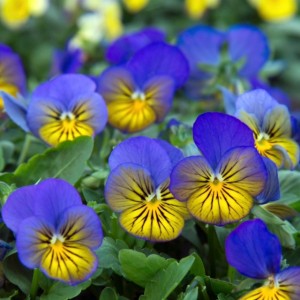Transplanting Trees and Shrubs
Transplanting trees and shrubs appears an easy task — deceptively so! Many transplants die due to improving transplanting. But if you’re about to give a facelift to a landscape design that has been neglected for years, then you will need to move existing plant matter, whether for relocation or for disposal. If you opt for shrub and tree transplanting, you must take steps to improve the likelihood of survival.
Here’s How:
Location, location, location! Prior to transplanting, determine whether the tree or shrub likes sun or shade, and what its spacing and watering requirements are. For instance, don’t locate a plant that craves water next to one that prefers dry conditions: their needs will be incompatible.
*
Dig the new hole before you dig up the tree or shrub. Once you dig up the plant, the longer its roots go without a home, the lower your chances for successful transplanting.
*
Estimate the width and depth of the root ball by doing a bit of exploratory digging around the plant. The width of the new hole should be twice that of the root ball. The depth should be kept a bit shallower, to avoid puddling and consequent rotting.
*
When you reach the bottom of the new hole, resist the temptation to break up the soil beneath. You would think that this would help the tree or shrub, allowing its roots to penetrate deeper. Instead, it could cause the tree or shrub to sink, inviting rot.
*
Dig out the tree or shrub selected for transplanting. But don’t start digging right at the base of a mature tree or shrub. Rather, start digging about 3 feet out from the base, all along the perimeter. Get a feel for where the main mass of roots lies. Also, begin to judge what the weight will be of plant + roots + soil clinging to roots. You may need someone to help lift it!
*
The idea is to keep as much of the root ball (roots + soil) as intact as possible. But the larger the plant is, the chances of getting anything close to the entire rootball will diminish — and you wouldn’t be able to carry it anyhow! Usually, you will have to cut through some roots on a mature plant (usually with a sharp shovel or with pruners — make a good, clean cut).
*
Once you’ve removed enough soil from around the sides of the plant, you’ll eventually be able to slip your shovel under it and begin to loosen the plant’s grip on the soil below it. After it’s loose, spread a tarp on the ground nearby and gently move the tree or shrub onto the tarp.
*
Using the tarp as a transporting medium, drag the tree or shrub over to the new hole (dug in steps 1-4). Gently slide it into the hole, and get it straight. Shovel the excavated soil back into the hole. Tamp this soil down firmly and water it as you go, to eliminate air pockets. The formation of air pockets could cause the tree or shrub to shift after transplanting. At that point, it is a good idea to add root stimulator to help acclimation and promote new root growth
*.
Mound up the soil in a ring around the newly transplanted tree or shrub, forming a berm that will catch water like a basin. This will help you achieve your main objective from here on out –keeping the new transplant’s roots well watered until it becomes established.
*
Spread a 3″ layer of landscape mulch around the new transplant. But keep it a few inches away from the base of the tree or shrub, to promote air circulation and so as not to invite rodents from nibbling on the trunk. Rodents become emboldened by the cover mulch provides.
*
Then water, water, water. The first summer would be a difficult one for the tree or shrub to weather unless it gets plenty of water. Watering is as essential as anything to success in shrub and tree transplanting.
Question: Jimmie, how often do I need to feed my landscaping? Thank you for your time.Bonnie L. in Prosper.
Answer: Hi Bonnie, a general answer to your question would be once a year. I assume you have native type landscaping, so you would need to apply a high-quality Tree and Shrub type fertilizer once a year to put back the nutrients in the soil your landscaping has thrived on the previous year. Allot of people forget to do this, your plants continuously deplete the soil of its nutrients each season until eventually, the soil is so depleted you will start to see the landscaping look tired and old.
It is allotted like you going to your refrigerator and taking out food to eat out of it every day. Eventually, you will need to go to the store and get more food right? Plants are no different! Until next time…Happy Gardening!!
